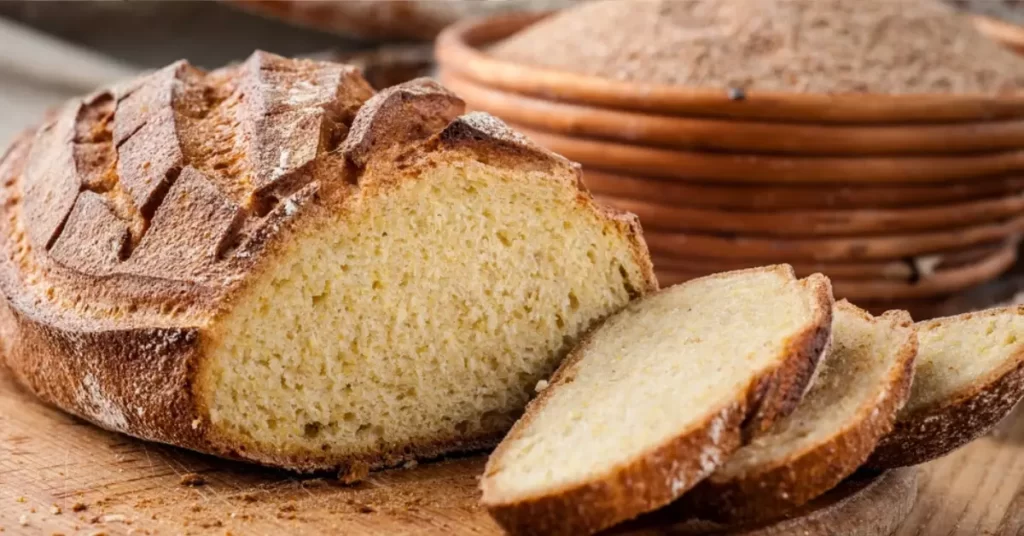There’s nothing quite like the aroma and taste of freshly baked bread. It’s a simple pleasure that can make any meal more delicious.
However, keeping that bread fresh and enjoyable for as long as possible can be a bit of a challenge. In this article, we’ll explore how to store fresh baked bread to prolong its freshness, taste, and texture.
Understanding Bread Freshness
Before diving into storage techniques, it’s essential to understand the factors that affect bread freshness. Bread begins to lose its freshness as soon as it’s baked due to exposure to air, causing it to become dry and stale.
Moreover, the moisture in the bread can encourage the growth of mold, affecting the bread’s safety and taste. The goal of proper storage is to strike a balance between preserving freshness and preventing mold growth.
Types of Bread and Their Storage Needs
There are many types of bread, and each has unique storage requirements. For example, crusty breads like baguettes and artisan loaves need to breathe to maintain their crisp crust, while softer breads like sandwich loaves and brioche require a more sealed environment to prevent drying out. Understanding the specific needs of each bread type is crucial for optimal storage.
Storing Bread at Room Temperature
Paper Bags
For crusty bread, a paper bag is an ideal storage option. The paper allows the bread to breathe, maintaining its crispy exterior while slowing down the staling process. However, paper bags don’t seal in moisture, so the bread may become stale faster than in other storage methods.
Plastic Bags
Softer breads, such as sandwich loaves, should be stored in airtight plastic bags. This helps to retain the moisture within the bread, preventing it from becoming dry and stale.
Keep in mind that plastic bags can create a damp environment, which may encourage mold growth. Always use a clean, dry bag and check the bread regularly for any signs of spoilage.
Bread Boxes
Bread boxes offer a balance between the breathability of paper bags and the moisture retention of plastic bags. They’re suitable for most types of bread and can help to extend freshness.
Choose a bread box made of materials that promote air circulation, such as wood or ceramic, and ensure it’s clean and dry before storing your bread.

Refrigerating Bread
Storing bread in the refrigerator is not recommended, as the cold temperature accelerates the staling process. Bread stored in the refrigerator will become stale faster than bread stored at room temperature.
However, if you live in a hot and humid climate where mold growth is a concern, refrigerating bread may be necessary to prevent spoilage.
If you choose to refrigerate your bread, place it in an airtight plastic bag or wrap it tightly in plastic wrap to help retain moisture.
Freezing Bread
Freezing is an excellent option for preserving the freshness of bread for extended periods. This method is especially useful for those who bake bread in large batches or buy bread in bulk.
Slicing and Wrapping
Before freezing your bread, slice it into individual portions. This makes it easier to thaw only the amount needed, reducing waste.
Wrap each slice or portion tightly in plastic wrap, aluminum foil, or a freezer-safe plastic bag, ensuring there are no air pockets. Label the wrapped bread with the date and type of bread to keep track of its freshness.
Thawing Frozen Bread
To thaw frozen bread, remove the desired portion from the freezer and allow it to come to room temperature on the counter for a few hours.
For a faster thaw, you can use a microwave on the defrost setting or place the bread in a preheated oven for a few minutes. Be careful not to overheat the bread, as this can make it dry and crumbly.
Reviving Stale Bread
If your bread has become slightly stale, there are ways to revive its texture and taste. Placing the bread in a preheated oven for a few minutes can help restore its crispness. For softer bread, wrapping it in a damp towel and microwaving it for 10-15 seconds can help reintroduce moisture.
Understanding Mold and Bread Spoilage
Mold growth on bread is a sign of spoilage and should be taken seriously. Consuming moldy bread can lead to illness, so it’s essential to check your bread regularly and discard any bread that shows signs of mold. Mold can appear as fuzzy patches in various colors, including green, blue, and white.
Avoiding Common Bread Storage Mistakes
To ensure your bread stays fresh for as long as possible, avoid these common storage mistakes:
- Storing bread in direct sunlight or near heat sources
- Placing warm bread in a sealed container or bag
- Storing bread in a damp or dirty container
- Mixing different types of bread in the same storage container
FAQs
Can I store different types of bread together?
It’s best to store different types of bread separately, as each type may have specific storage requirements to maintain its freshness and texture.
How long does bread last in the freezer?
Bread can be stored in the freezer for up to three months. After this time, the bread may still be safe to eat but may lose its taste and texture.
How can I tell if my bread has gone bad?
Signs that your bread has gone bad include mold growth, an off smell, or an overly dry and crumbly texture.
Conclusion
Proper storage of fresh baked bread is essential for maintaining its taste, texture, and freshness.
By understanding the unique storage needs of different bread types and using appropriate storage methods, such as paper bags, plastic bags, bread boxes, and freezing, you can enjoy your delicious bread for longer periods.
Remember to always check for signs of spoilage and avoid common storage mistakes to ensure your bread remains safe and enjoyable to eat.
